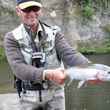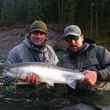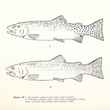A lot of us learned to fly fish on small waters. We cut our angling teeth on brook trout-laden creeks of Appalachia or maybe a high-mountain trickle somewhere in the Rockies. My first fly rod trout came from a tiny beaver pond in the headwaters of Colorado’s Taylor River, somewhere on the shoulders of Tin Cup Pass.
This little trickle likely wouldn’t have been fishable at all if not for the beavers that dammed its course and created the habitat suitable for trout. The fish was a stout little non-native brookie that, along with its brethren, had long ago pushed the native Colorado River cutthroats out of the stream. But to a kid more interested in the fish than the flavor, it didn’t matter. What mattered was the opportunity.
That little trickle — and thousands of others like them all across America—was protected by the Clean Water Act until the 2000s, when the U.S. Supreme Court issued a pair of rulings that left these sensitive waters vulnerable to development. According to the court, these small headwater streams — some of which run dry at certain times of the year—had no proven nexus with the “navigable” waters of the country, and therefore, they were not specifically protected under the Clean Water Act.




























